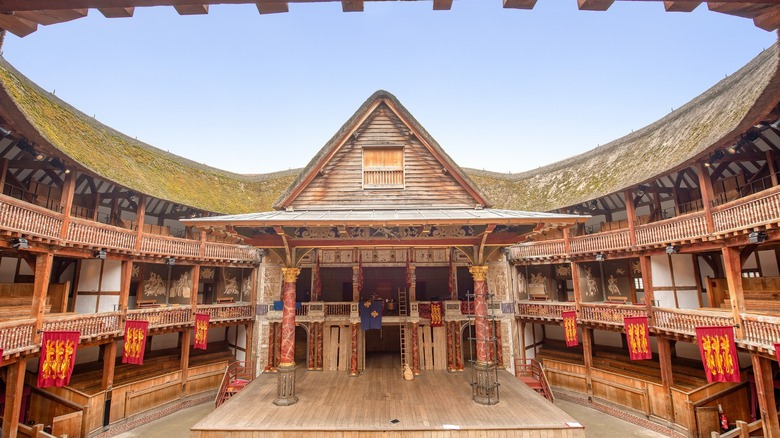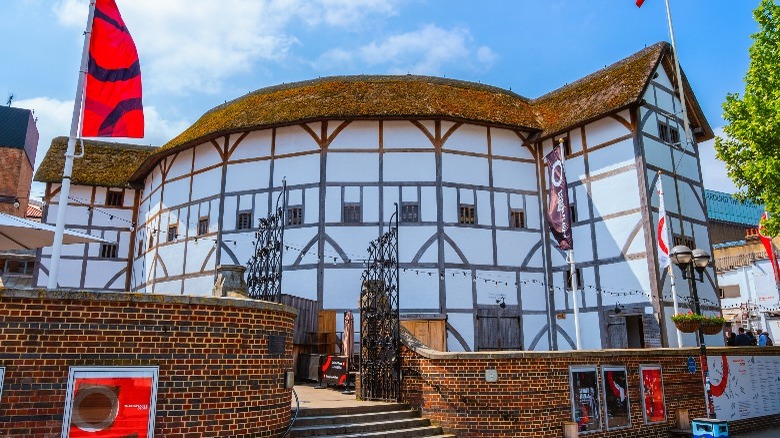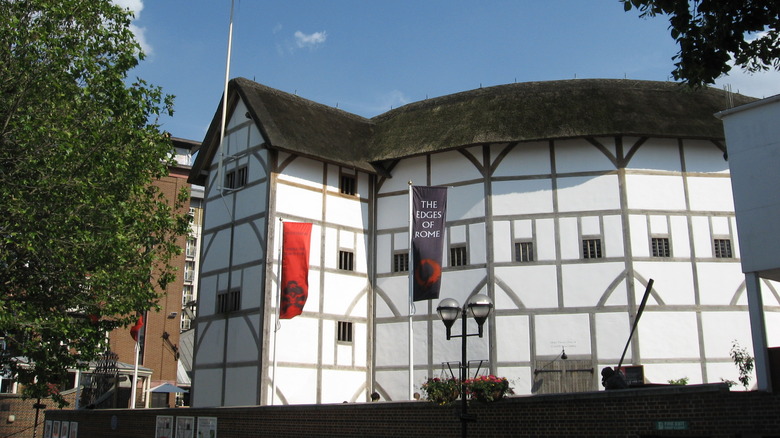The Quirky Concessions Theatre Goers Ate At Shakespeare's Globe
It seems as if food has accompanied entertainment throughout all of human history. From the recently unearthed pieces of fruits, nuts, and olives found in the Colosseum of ancient Rome to the popcorn and candy at your local movie theater, people have been munching on snacks while watching athletic and artistic performances for ages. It shouldn't be too surprising, then, to learn that audiences were nibbling on concessions while enjoying the works of William Shakespeare – a notorious food hoarder and barley slinger — at London's legendary Globe Theater. Archaeological excavations in the late eighties have uncovered the remains of berries, chicken bones, oyster shells, and more.This theater food was sold close by in the vicinity, and there could have possibly even been some vendors within the crowd.
A live Shakespeare production at the Globe was a bit of a chaotic affair — far from the quiet, respectful theater shows of today. Audiences cheered and heckled alike, piling on their praise for a riveting performance but freely expressing their disapproval if they so desired. That criticism could take the form of projectile food, in which audience members threw their snacks at the actors. Even though tomatoes were most likely not part of the English diet yet, there were plenty of other options to toss at underwhelming entertainers — and to eat between lobs.
Goodies at the Globe
Fruits such as grapes, figs, and plums were also present in the archeological findings at the Globe Theater, while other sources list apples, oranges, and nuts as concession snacks. In her book "The Friendly Shakespeare," Norrie Epstein called hazelnuts, "the Elizabethan equivalent of Raisinets" (via The Food Timeline). Perhaps a more apt comparison might have been the more commonly beloved bags of popcorn — even though Raisinets have their fans.
Besides physical evidence, information about what audiences ate at the Globe Theater can also be found in primary sources like other poems and other plays. The dramatist John Tatham claimed that theater-goers threw pears at performers while the poet Thomas Overbury wrote about eating "Ginger bread at a Playhouse." Of course, among all these convivial options, there was always ale available to encourage an even more raucous crowd. Alcohol and the theater have a shared history, too, as concessions were born out of traveling troupes visiting and performing at taverns.
The tavern and the theater
Back in Elizabethan England, it was a joyous occasion when a theater troupe rolled into town to break up the monotonous farmwork of the peasantry. The owners of the local inns, which also functioned as pubs serving food and drinks for the weary traveler, realized that a group of these actors were great for business. The troupe would park its cart in an inn yard and open itself into a stage so that audiences could pick up a pint of ale or a snack while they watched the show. The setup was so successful for both parties that a good portion of these inns morphed into genuine theaters with built-in performance spaces and galleries.
Although the Globe Theater didn't start as a tavern inn, nearby pubs offered their services, so audiences could bring concessions into the show. This was such common practice that the taverns and the Globe were mutually cooperative, essentially operating as concession stands. In fact, we know of at least one pub owned by an actor named John Hemminges who performed for Shakespeare's theater company. There are also accounts of vendors selling their fare within theater yard grounds, bringing the taphouse inn to the show itself. Today, you can grab a bite at the much fancier Swan Restaurant at the Globe, which serves afternoon tea, sparkling wine, and seasonal meals, but you won't get to throw it at any thespians.



